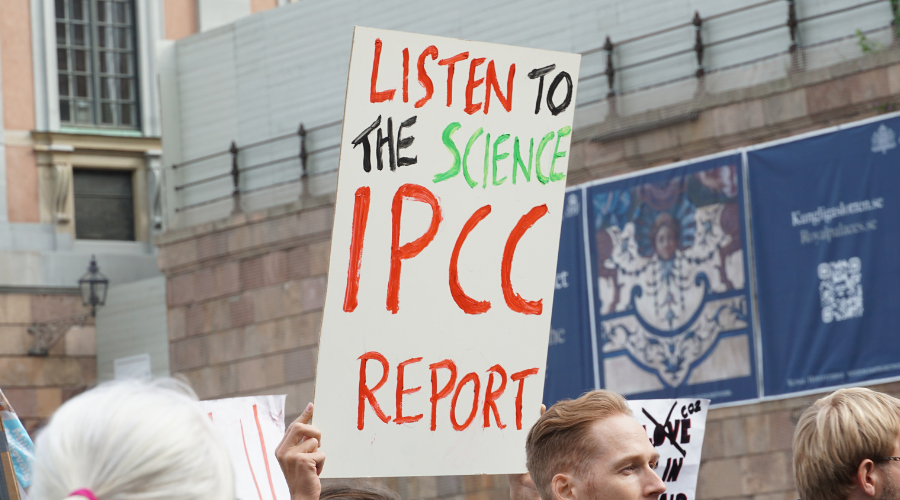
Fungi’s Potential for Climate Mitigation and Adaptation
28 July 2025
Our natural soundscape: Reestablishing a connection with nature
28 July 2025By Judith KOREN
IPCC reports are crucial, up-to-date assessments on the state of our climate, advising world leaders, policymakers, and scientists on effective climate policy. Despite the alarming findings, many nations fail to implement effective climate measures. The recent WGII report, “Climate Change 2022: Impacts, Adaptation, and Vulnerability,” underscores this ongoing pattern of political inertia.[1] Beyond the impact on scientists, IPCC reports contain valuable information that has the power to influence behavioral change and inform the voting decisions of global citizens.[2],[3] However, these reports, including the more accessible Summary for Policymakers, often lack visibility and are challenging to read,[4] limiting their impact on the general public.
To bridge this gap, IPCC authors should partner with youth climate activists and indigenous leaders, collaborating with the IPCC Secretariat Communications and Media Relations team to create an accessible version of the reports titled “IPCC Education Report [year]: Key Findings from Working Group [x].” More often than not, people want to engage with climate science but face barriers such as lengthy reports, scientific jargon, and limited exposure. This education report could overcome these obstacles, enabling a broader audience to understand the urgent findings about our planet’s future.
Youth are catalysts for change, demanding long overdue shifts in the status quo of climate policy in the most impactful global fora. More recently, the IPBES[5] and UNCBD[6] have called for more meaningful diverse stakeholder engagement, particularly with indigenous leaders, as strategies to meet global climate and environmental targets. In fact, AR6 WGII highlights that collaborating with indigenous peoples improves the likelihood of sustainable adaptation and resilient climate development.[7] It is time the IPCC forms partnerships with the individuals driving change in their local communities and demanding bold action at the national and international levels, integrating the recommendations of various UN bodies.
Youth climate activists and indigenous leaders would partner with the authors at the “final draft report and SPM” stage. Working in parallel on the education report, the youth activists and indigenous leaders actively discuss with the authors the key messages and takeaways to strategize a narrative. Together, the stakeholders formulate impactful narratives that are accessible to and resonate with the broader public, breaking the barrier to climate science through a 5-page report created for a diverse audience by a diverse audience. The IPCC has the opportunity to utilize climate activists as their liaisons between the scientific community and the public to share crucial information that is not lost in scientific jargon.
With billions of users worldwide, social media serves as a powerful tool for disseminating crucial information quickly and effectively.[8],[9] In the midst of the climate crisis, leveraging partnerships with youth on social media platforms offers the IPCC an unparalleled opportunity to reach a vast audience and raise awareness about its reports.[10] With exposure and accessibility, not only is the IPCC engaging in the recommendations it makes, but the citizens of the world may also shift their lifestyle choices as a result of the information they take away from an education report.[11]
[1] World Economic Forum. “IPCC Report: Urgent Climate Action Needed to Halve Emissions by 2030.” April 6 2022. https://www.weforum.org/agenda/2022/04/ipcc-report-mitigation-climate-change/.
[2] UN News. “IPCC Adaptation Report ‘a Damning Indictment of Failed Global Leadership on Climate,’” February 28, 2022. https://news.un.org/en/story/2022/02/1112852.
[3] Mavrodieva, Rachman, Harahap, and Shaw. “Role of Social Media as a Soft Power Tool in Raising Public Awareness and Engagement in Addressing Climate Change.” Climate 7, no. 10 (October 16, 2019): 122. https://doi.org/10.3390/cli7100122.
[4] Painter, James. “The Effectiveness of the IPCC Communication: A Survey of (Mainly) UK-Based Users,” September 2015. Page 87.
[5] IPBES (2019): Summary for policymakers of the global assessment report on biodiversity and ecosystem services of the Intergovernmental Science-Policy Platform on Biodiversity and Ecosystem Services. https://doi.org/10.5281/zenodo.3553579.
[6] IUCN (2023): “Indigenous peoples and local communities at the heart of CBD negotiations in Geneva”. https://www.iucn.org/story/202311/indigenous-peoples-and-local-communities-heart-cbd-negotiations-geneva
[7] Carmona, Rosario, “The Indigenous World 2023: The Intergovernmental Panel on Climate Change (IPCC)” (2023). https://www.iwgia.org/en/ip-i-iw/411-ipcc/5156-iw-2023-ipcc.html.
[8] Statista. “Social Media Penetration Rate Worldwide 2021,” January 2022. https://www.statista.com/statistics/269615/social-network-penetration-by-region/.
[9] Statista. “Impact of Social Media on Daily Life Worldwide 2019.” February 2019. https://www.statista.com/statistics/1015131/impact-of-social-media-on-daily-life-worldwide/.
[10] Hu, Jane. “The Second Act of Social-Media Activism.” The New Yorker, August 3, 2020.
https://www.newyorker.com/culture/cultural-comment/the-second-act-of-social-media-activism.
[11] Mavrodieva et. al. “Role of Social Media as a Soft Power Tool in Raising Public Awareness and Engagement in Addressing Climate Change.”
References
Carmona, Rosario, Dalee Sambo Dorough, Joanna Petrasek MacDonald, Tunga Bhadra Rai, Gideon Abraham Sanago, Stefan Thorsell. “The Indigenous World 2023: The Intergovernmental Panel on Climate Change (IPCC)” IWGIA, (2023). https://www.iwgia.org/en/ip-i-iw/411-ipcc/5156-iw-2023-ipcc.html.
Hu, Jane. “The Second Act of Social-Media Activism.” The New Yorker, August 3, 2020. https://www.newyorker.com/culture/cultural-comment/the-second-act-of-social-media-a ctivism.
IPBES (2019): Summary for policymakers of the global assessment report on biodiversity and ecosystem services of the Intergovernmental Science-Policy Platform on Biodiversity and Ecosystem Services. IPBES secretariat, (2019) https://doi.org/10.5281/zenodo.3553579.
Mavrodieva, Aleksandrina V., Okky K. Rachman, Vito B. Harahap, and Rajib Shaw. “Role of Social Media as a Soft Power Tool in Raising Public Awareness and Engagement in Addressing Climate Change.” Climate 7, no. 10 (October 2019): 122. https://doi.org/10.3390/cli7100122.
Painter, James. “The Effectiveness of the IPCC Communication: A Survey of (Mainly) UK-Based Users,” September 2015, 98. https://www.ipcc.ch/site/assets/uploads/2016/02/Full_Report_final_4_March_2016.pdf
Prakoso, S G, I F Timorria, and A P Murtyantoro. “Social Media Interconnection between People: Greta Thunberg’s Influence on the Climate Movement.” IOP Conference Series: Earth and Environmental Science 905, no. 1 (November 1, 2021): 012136. https://doi.org/10.1088/1755-1315/905/1/012136.
Statista. “Impact of Social Media on Daily Life Worldwide 2019,” February 2019. https://www.statista.com/statistics/1015131/impact-of-social-media-on-daily-life-world wide/.
UN News. “IPCC Adaptation Report ‘a Damning Indictment of Failed Global Leadership on Climate,’” February 28, 2022. https://news.un.org/en/story/2022/02/1112852.
World Economic Forum. “IPCC Report: Urgent Climate Action Needed to Halve Emissions by 2030.” Accessed April 11, 2022. https://www.weforum.org/agenda/2022/04/ipcc-report-mitigation-climate-change/.


